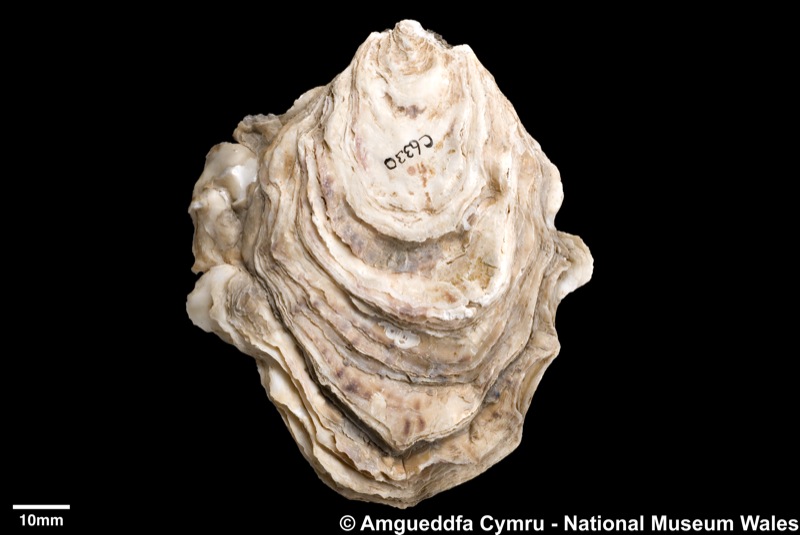Crassostrea gigas (Thunberg, 1793)
Ostreoidea : Ostreidae |
| Tebble name: | n/a |
| Smith & Heppell name: | Crassostrea gigas (Thunberg, 1793) |
To size: To 180mm. Shell Structure: Solid, heavy. Equivalve: Inequivalve, cemented valve deeply cupped, upper valve flat or slightly convex. Equilateral: Inequilateral. Outline: Irregularly suboval, usually much narrower towards umbos and margins irregularly extended and fluted.
Margin: Chomata absent. Ligament: Alivincular, internal on a triangular resilifer. Pallial Musculature: Adductor scar kidney shaped, reddish to purple black in colour.
Distribution & Ecology
This is the widely introduced commercial oyster. Oyster farms are now widespread around the coasts of UK and Ireland except for the northeast coast of England and east coast of Scotland.
Depth Range
Intertidal
Depth Range
Intertidal

Additional Information & Related Species
Related Species
Ostreoidea : Ostreidae
References
Listed are literature citing Crassostrea gigas (Thunberg, 1793). Reference containing the species Type Description is highlighted.
|
Thunberg C P 1793. Tekning och Beskrifning på en stor Ostronsort ifrån Japan. Kongliga Vetenskaps Academiens Nya Handlingar. 14 (4-6): 140-142, 1pl. |
Resources
- Conchological Society
of Great Britain & Ireland
Provides resources for understanding, identifying, recording, and conserving molluscs - CLEMAM
Check List of European Marine Mollusca - MarLIN
The Marine Life Information Network for Britain and Ireland (MarLIN) provides information for marine environmental management, protection and education. It is a centre of excellence in spatially based and time-series marine biological information and supports good stewardship in the marine environment. - NBN Gateway
National Biodiversity Network's Gateway. Use it to explore UK biodiversity data, as contributed by participating data providers. - BivAToL
- MarBEF
- Malacological Society
- Unitas Malacologica
- Census of Marine Life
- MarBEF
MarBEF, a network of excellence funded by the European Union and consisting of 94 European marine institutes, is a platform to integrate and disseminate knowledge and expertise on marine biodiversity, with links to researchers, industry, stakeholders and the general public.
Record last modified: 22/03/2016






